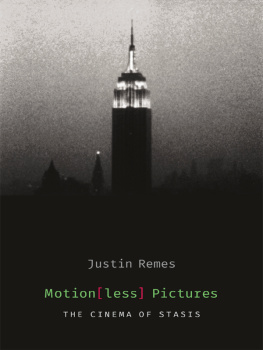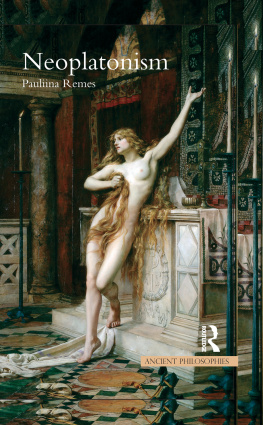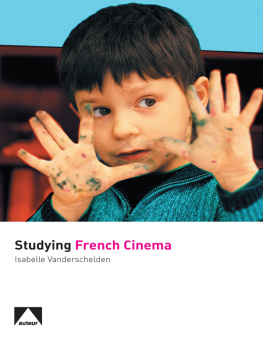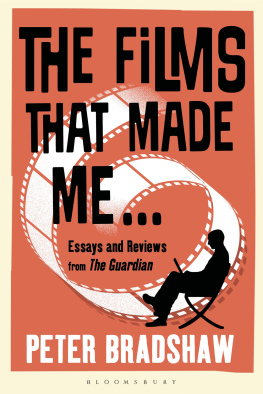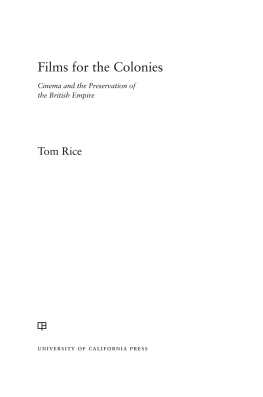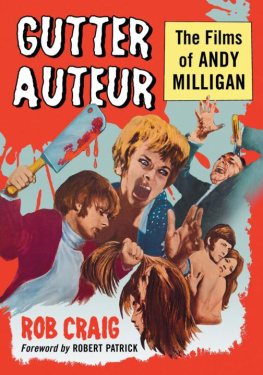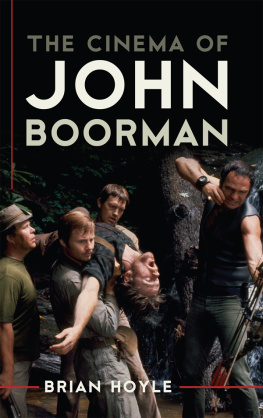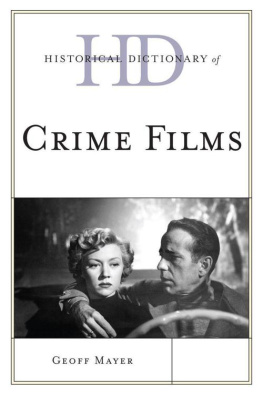MOTION(LESS) PICTURES
FILM AND CULTURE
John Belton, Editor
FILM AND CULTURE
A series of Columbia University Press
Edited by John Belton
For the list of titles in this series see .
Justin Remes
Motion(less) Pictures
THE CINEMA OF STASIS
COLUMBIA
UNIVERSITY
PRESS
NEW YORK
Columbia University Press
Publishers Since 1893
New York Chichester, West Sussex
cup.columbia.edu
Copyright 2015 Columbia University Press
All rights reserved
E-ISBN 978-0-231-53890-9
Library of Congress Cataloging-in-Publication Data
Remes, Justin.
Motion(less) pictures : the cinema of stasis / Justin Remes.
pages cm. (Film and culture)
Includes bibliographical references and index.
ISBN 978-0-231-16962-2 (cloth : alk. paper) ISBN 978-0-231-16963-9 (pbk. : alk. paper) ISBN 978-0-231-53890-9 (ebook)
1. Experimental filmsHistory and criticism 2. Avant-garde (Aesthetics). I. Title.
PN1995.9.E96R395 2015
791.43611dc23
2014029304
A Columbia University Press E-book.
CUP would be pleased to hear about your reading experience with this e-book at .
Cover image: Andy Warhol, Empire (detail), 1964. 2014 The Andy Warhol Museum, Pittsburgh, PA, a museum of Carnegie Institute. All rights reserved.
Cover and book design: Lisa Hamm
References to websites (URLs) were accurate at the time of writing. Neither the author nor Columbia University Press is responsible for URLs that may have expired or changed since the manuscript was prepared.
Sonnet: Homage to Andy Warhol by Ron Padgett
1964; reprinted by permission of the author.
CONTENTS
I would like to begin by thanking Kirsten Thompson, who has always gone far beyond the call of duty to help me improve as a writer and researcher (even providing me with extensive feedback on papers I wrote outside of her classes). It was Kirsten who first proposed that I write about static films after reading an early draft of a seminar paper I wrote on the subject. Her encouraging remarks persuaded me that I had stumbled on a project worth pursuing. This book simply would not exist without her tireless guidance and support.
I would also like to thank the other individuals who served on my doctoral dissertation committee. I first took a class with Steve Shaviro when I was in the masters program at Wayne State, and it was this coursewith its challenging theoretical texts and bizarre yet utterly compelling filmsthat inspired me to pursue a PhD in Film and Media Studies. (This is also where I received my first exposure to the films of Andy Warhol.) Steves unparalleled mastery of film theory and philosophy never ceases to amaze me. He is a constant source of inspiration. I am also incredibly grateful to Scott Richmond, not only because he has a near-encyclopedic knowledge of avant-garde cinema but also because of the remarkable amount of time and energy that he has been willing to devote to helping me become a better scholar. Scott has always believed in me and my project, and for that, I cannot thank him enough. Finally, reading Roy Grundmanns book Andy Warhols Blow Job was something of an epiphany for me, as it helped me to realize how much mileage a smart scholar could get out of a single simple static film. It has been an honor working under the guidance of such a perceptive thinker and skillful researcher.
I would like to thank Columbia University Press, especially Jennifer Crewe, John Bolton, Kathryn Schell, and Roy Thomas, and my copyeditor Joe Abbott.
My gratitude extends to the anonymous readers commissioned by Columbia University Press, who provided a number of excellent suggestions for improving this manuscriptas did the anonymous readers at Cinema Journal, Screen, and the British Journal of Aesthetics. My research has also been heavily shaped by the thoughtful comments of Michael Snow, Mieko Shiomi, Dan McLaughlin, Jon Jost, Kyle Edwards, Hunter Vaughan, Alison Hoffman-Han, Bruce Jenkins, Andrew Epstein, and Robert Burgoyne.
I would like to thank my father, not only for his detailed feedback on this project but also for exposing me to a broad variety of art, music, literature, and cinema from a young age. I would also like to thank my mother for forcing me to read a book every week as soon as I was able to and for always offering her unconditional love. Ashley Ford, Nana and Grandpa, and my in-laws, Jim and Cynthia Rosiek, have all supported me in more ways than I can count, and for that, I am profoundly grateful. Finally, my deepest gratitude goes to my wife, Katrina, and my son, J.J., who have been daily sources of affection, kindness, and encouragement. Words cannot express how fortunate I am to have them in my life.
The more we consume moving images, the more the single still image rises above the rest, substituting itself for our reality.
GISLE FREUND
There is nothing in the structural logic of the cinema filmstrip that precludes sequestering any single image. A still photograph is simply an isolated frame taken out of the infinite cinema.
HOLLIS FRAMPTON
L arry Gottheims film Fog Line (1970) begins with a still shot of a landscape covered in dense fog. All that can be seen through the fog are the outlines of a few trees intersected by four high-tension wires. The setting is subtly beautiful, and the complete lack of sound creates a space for meditation. Minutes pass. Apart from some slight shaking, the camera does not move, nor do any elements within the mise-en-scne. The trees and telephone wires become easier to make out as the fog lifts, although the fogs retreat is so gradual that its movement is not perceived by the viewer. After eleven minutes of the same motionless shot, the film abruptly ends (see ). During my first viewing of Fog Line, I found the film simultaneously boring and absorbing. I was bored because, on a superficial level, nothing happened. Yet I was fascinated because I had never encountered a film like this before. It was so still, so uneventful, I felt like I was staring at a photograph or a painting for several minutes rather than watching a movie.
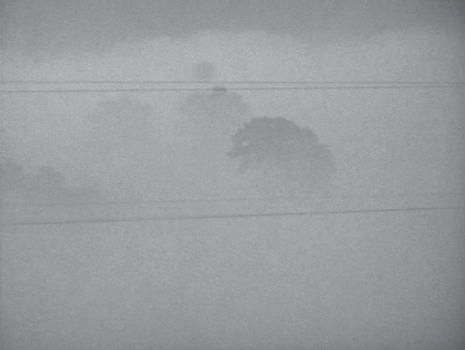
FIGURE 1.1 Larry Gottheim, Fog Line (1970).
While Fog Line is a remarkable and unique cinematic experience, it is not without predecessors, nor is it without successors. In fact, it places itself in a rich and variegated tradition that I will call the cinema of stasis. Static films offer radical challenges to conventional conceptions of cinema, since they are ostensibly motion pictures without motion.
The tradition of static cinema arguably starts in 1930 with Walter Ruttmanns Weekend (Wochenende) (1930). The film features a rich, evocative sound track of voices, clocks, alarms, and other found sounds, but the screen remains blank and motionless for the works entire eleven-minute duration. At first, Weekend seemed like little more than a curio, an idiosyncratic experiment designed to test the limits of cinematic expression. But a similar kind of cinematic stasis began to appear again in 1950s France with Situationist films like Gil Wolmans Lanticoncept (The Anticoncept) (1951) and Guy Debords Hurlements en faveur de Sade (Howls for Sade) (1952), both of which traffic in immobile visual fields stripped of any imagery. By the 1960s the floodgates had opened. This was an era in which the boundaries separating various media were being challenged more than ever before, and this was reflected in a series of provocative and influential static films such as Markers

